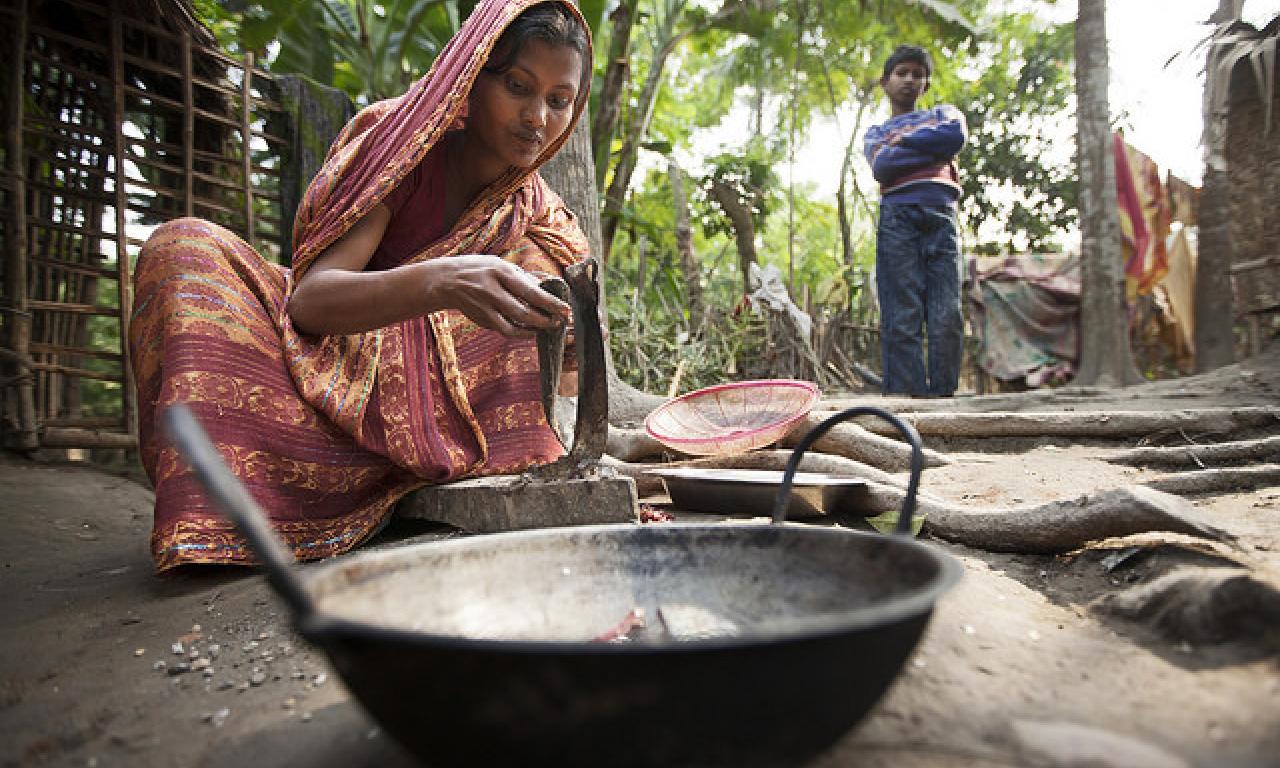
A guest blog by Paula Kantor and Ranjitha Puskur, senior scientists at WorldFish, and Miranda Morgan, post-doctoral fellow at WorldFish. They are leading WorldFish’s efforts to integrate gender in its CGIAR Research Program on Aquatic Agricultural Systems.
Recommended publications
- Transforming aquatic agricultural systems towards gender equality: a five country review
- Gender-equity or gender-equality scales and indices for potential use in aquatic agricultural systems
A guest blog by Paula Kantor and Ranjitha Puskur, senior scientists at WorldFish, and Miranda Morgan, post-doctoral fellow at WorldFish. They are leading WorldFish’s efforts to integrate gender in its CGIAR Research Program on Aquatic Agricultural Systems.
If agricultural development efforts are to effectively contribute to reducing poverty and food insecurity - and help families adapt to the effects of climate change - agricultural researchers and practitioners must rethink how they integrate gender within their work. But, why is change necessary?
The past 40 years have seen tremendous progress in getting gender on the development agenda and these successes are to be applauded. However, putting gender on the agenda has not been enough to achieve the improvements in women’s life choices and development outcomes that we all desire.
Gender inequalities have persisted: the Food and Agricultural Association of the UN (FAO) reports that female-headed households in developing countries today still are far less likely than male-headed households to have management control over agricultural holdings, own livestock assets, avail themselves of credit, access markets, use fertilizer or mechanical equipment or have access to extension services. The persistence of these gender differences in the face of decades of agricultural research and programming indicates to us that it is time to rethink how gender is integrated in agriculture in order to do better at addressing these gaps.
So, what needs to change? Over the past decades, closing gender gaps in access to resources, markets and technologies has become an agriculture development goal in itself based on the understanding that doing so could lead to productivity gains that would directly benefit women and families.
While useful, efforts that focus on filling identified gaps – the visible symptoms of gender inequality – miss identifying and addressing the underlying factors that caused the gaps in the first place. They accept the existing social context, including attitudes and practices like women’s responsibilities for domestic work, the idea of men as breadwinners or limits on women’s movements outside of the home, without questioning whether and how that context constrains and enables women’s and men’s opportunities and outcomes.
These approaches offer no assurance that women will be able to take advantage of, or benefit from, the new agricultural opportunities or technologies offered to ‘fill the gaps’. What is acceptable for women and men to be, do, own and control remains unchallenged, and continues to impose barriers.
Part of rethinking how gender is integrated in agriculture involves understanding and questioning the underlying social norms, values and relationships that influence who gets access to what resources, why, when and how. By not questioning the social context or understanding its role in enabling and constraining agricultural development, agricultural researchers and practitioners risk unintended consequences from their actions that may make matters worse for women, men and their households.
Until the agricultural research community begins to work with both women and men to address the barriers to gender equality found within the ‘social status quo’, it cannot hope to bring about lasting improvements to poverty, food security and resilience.
The change we seek is transformative - it places the social context at the center of analysis and seeks to challenge and change the systems and structures underlying gender inequality.
Transformative approaches to gender integration in agriculture go beyond closing gender gaps. They use knowledge of the social context to work with women, men and communities to both reduce gender disparities in access to resources, markets and technologies and change the gender norms and power relations that enable social inequalities to exist and persist. We expect that these gender transformative approaches (GTAs) to agricultural research in development will result in better and more lasting agricultural development outcomes.
The recent increase in attention to agricultural development as a key means to reduce poverty and food insecurity, and to gender in agriculture within this, means the time is right to move GTAs into the mainstream of agricultural research and practice. This will be challenging because the approaches grapple directly with power and social change, issues agricultural research institutes define as outside of their core missions.
Success will depend on working with like-minded partners to test the approaches and demonstrate the role of gender equality in achieving lasting improvements in agricultural development outcomes. There is strength in numbers – we look forward to learning with others how to make gender transformative change in agriculture a reality.